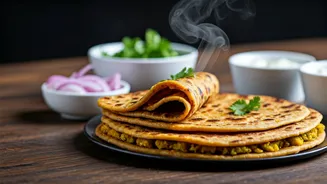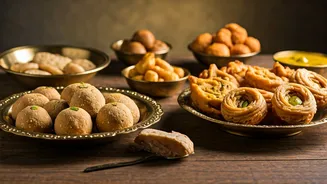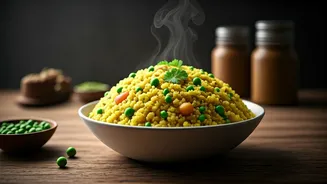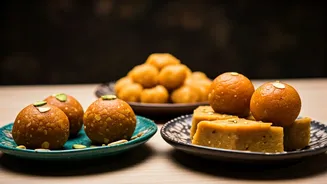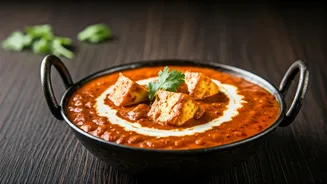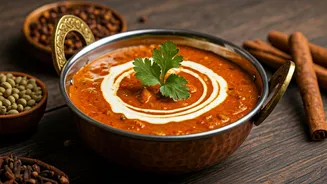Samosa Chaat Origins
This Samosa Chaat recipe pays homage to the beloved Indian street food that effortlessly combines various flavors. The author's personal connection to the dish,
echoing the bustling streets and rich aromas of India, underscores its significance. This recipe is a culmination of years of kitchen experimentation. The creator has honed this recipe to strike the ideal balance between authentic taste and modern convenience, making it perfect for both everyday snacks and festive gatherings like Diwali. Whether using store-bought or homemade samosas, the goal is always to deliver an experience that’s bursting with flavor, showcasing the harmonious blend of crispy, creamy, tangy, and sweet elements that define Indian cuisine.
Assemble Your Ingredients
The foundation of this Samosa Chaat begins with the samosas themselves. While homemade options are available, store-bought frozen samosas from the Indian grocery store offer a convenient alternative, especially when time is limited. To achieve the perfect texture, these samosas are ideally air-fried or baked to a golden crispness. Complementing the samosas is the chole, or spiced chickpeas. The recipe provides flexibility, using either dried chickpeas (soaked in advance) or canned chickpeas. The article recommends preparing the chole a day ahead to enhance the flavors and achieve the perfect consistency. The success of the chaat also depends on the presence of two key chutneys: Cilantro-Mint Chutney and Tamarind Chutney, which can be made in advance. Finally, a base of smooth, slightly sweetened yogurt is essential, balancing the intense spices.
Master the Chutneys
Two types of chutneys are key to the character of the Samosa Chaat. They can be prepared in advance. The Cilantro-Mint Chutney brings a fresh, herbaceous element, while the Tamarind Chutney contributes a sweet and tangy contrast. The preparation can be done a few days prior to serving or even frozen for future use. The author notes that making the chutneys ahead saves time and effort when a craving for chaat strikes. These chutneys not only elevate the dish's flavor profile but also provide a contrast to the richness of the samosas and the spiciness of the chole. By integrating these components, the Samosa Chaat becomes a symphony of textures and tastes, ensuring an exciting culinary experience.
Adding the Yogurt
Yogurt is an essential element, and shouldn't be overlooked. Its cooling effect acts as a counterpoint to the dish's bolder flavors. It's recommended to whisk the yogurt with a pinch of salt and a bit of sugar. This helps to create a creamy, smooth, and delicately sweetened base, enhancing the contrast with the spicy chole and the tangy chutneys. The yogurt's gentle tang also complements the samosa's richness and the toppings' vibrancy. Without the balancing effect of yogurt, the dish might become overpowering. Thus, this simple addition contributes substantially to the overall balanced taste.
Chaat Topping Secrets
Several toppings help to create layers of flavor and texture. Finely diced red onion is used for its sharp flavor and crunch. Fresh cilantro and pomegranate seeds are added for vibrant color and a burst of freshness. The addition of thin sev provides a crucial crispy element that contrasts with the softer textures of the samosas and chickpeas. Finally, a sprinkle of chaat masala and Kashmiri red chili powder is the finishing touch, adding a final note of flavor and color. These toppings are added just before serving. Keeping all the ingredients separate keeps the samosas from losing their crispness and ensures every bite is as delicious as the first.
Customizing the Chaat
This Samosa Chaat offers flexibility. While the given recipe provides a foundation, it also gives room for personal tastes. For those who like a bolder flavor, the addition of green chilies can be used to add extra spice, while lime juice can offer an extra zing. More chutney may be used for those who like the chaat to be saucy. The author says that keeping the different components separate until serving helps in maintaining the samosa's crispness. This allows one to customize each serving to their preferences.


